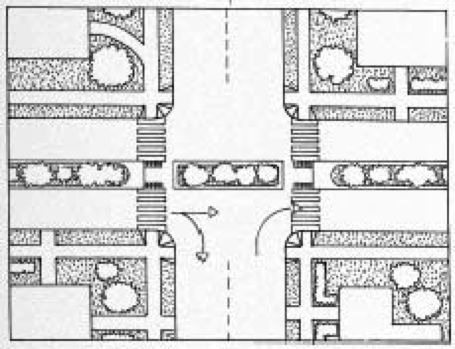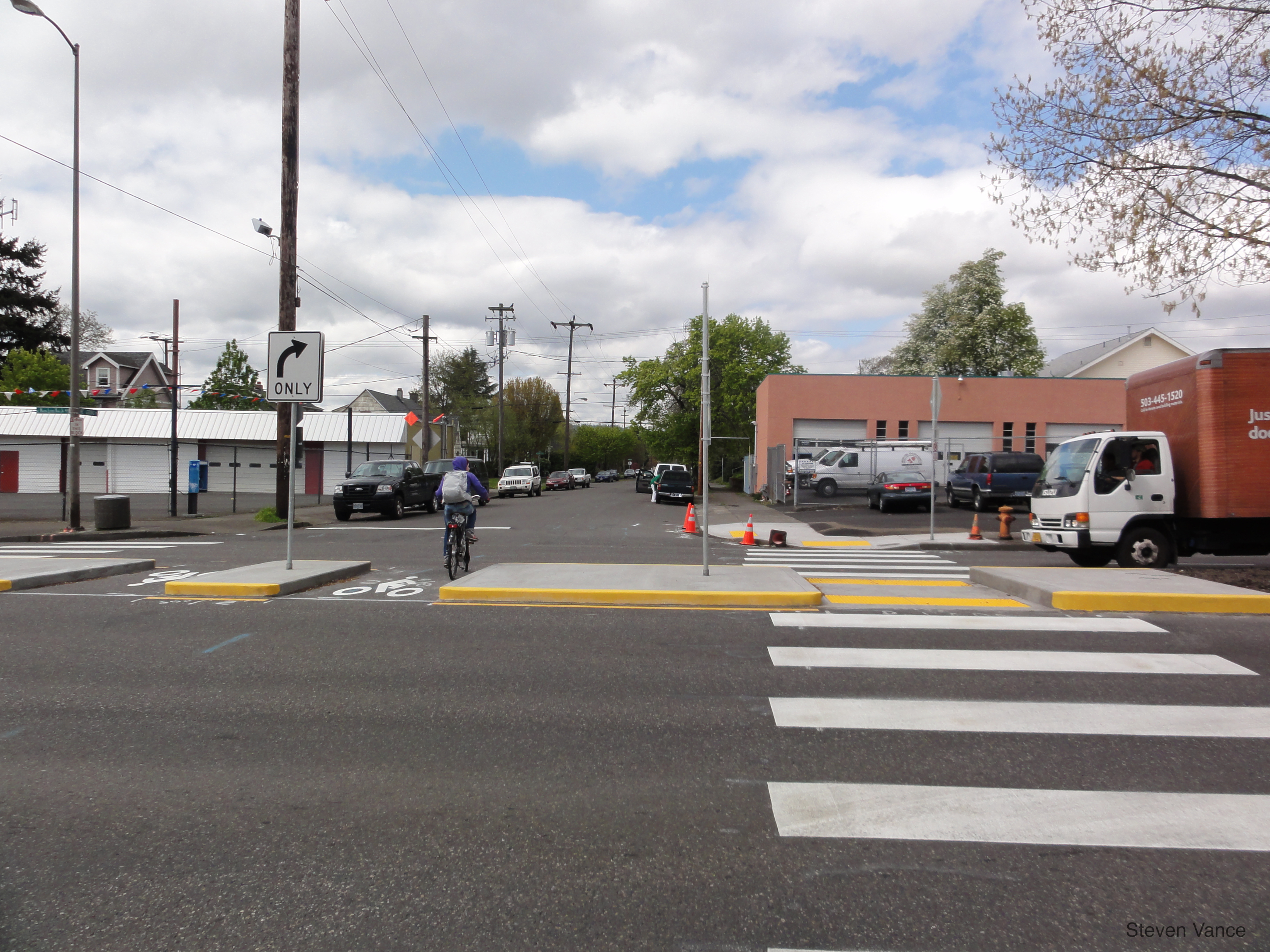
Illustration of median barriers at an intersection to limit movements for motor vehicles and allow access to pedestrians and bicyclists.
Source: Federal Highway Administration

Example of vehicle through movements being blocked by raised curbing.
Source: Flickr - Steven Vance (2010)